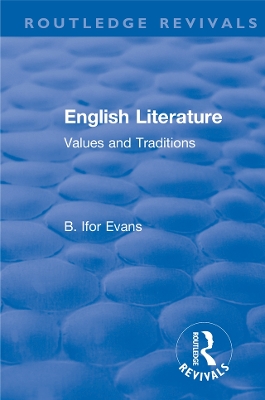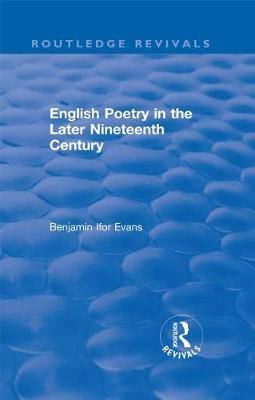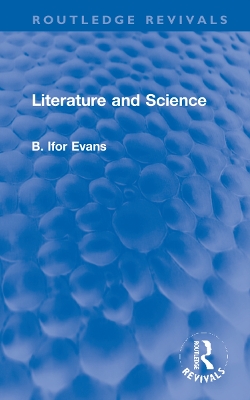Routledge Revivals
4 total works
First published in 1962, this book is a reflection on Sir Ifor Evans’s well-known A Short History of English Literature. In this reflective study, Evans wonders if it is possible to trace permanent elements in such a huge and varied mass of writings? As he moves from the Anglo-Saxon Caedmon to T.S Eliot, or from Milton to James Joyce, he finds out how, in unexpected ways, the English spirit of compromise extends into its literature, along with its love of nature and interest in the individual. In poetic imagery above all the British genius seems, typically, to have found a way of making ‘empiricism transcendental’. This book, which had its origin during the war under the aegis of the British Council, provides the reader with a stimulating passport to a very rich kingdom.
First published in 1933, this study, which underwent revision in the 1960s, is a comprehensive survey of the verse of English nineteenth-century poets whose work appeared after 1860. A special feature is the full and critical treatment of minor writers. In no other book is their work so carefully evaluated. There is a full account of the minor Pre-Raphaelites, of James Thomson, the poet of The City of Dreadful Night, of Henley, Stevenson and George MacDonald. John Davidson is the subject of a long and revealing study. Evans suggests that poetry from the late nineteenth century is neglected in scholarly study, and that Victorian Romanticism deserves more attention than it has recently received.
First published in 1948, English Literature Between the Wars sets out to answer a question: to what extent did the years between the two wars constitute a period in literature? Its exploration leads the author to assess the changes in the reading public, and in the movement of taste. He is led to the conclusion that in the inter-war period some writers were aware that a crisis in civilization was taking place and that these were the more genuinely creative writers.
Apart from a consideration of these general problems, the volume contains studies of E.M. Forster, James Joyce, Aldous Huxley, D. H. Lawrence, Virginia Woolf, and others. It also assesses the influence of war on the literature of the period, comments on the work of the younger writers, and adds a note on the theatre. Students of literature and history will find this book particularly interesting.
First published in 1954, Literature and Science discusses historically the relationship between science and literature and between scientists and men of letters from the Renaissance onwards. It shows periods when writers were enthusiastic about science as in the early days of the Royal Society and notably through the influence of Newton. Further it explores the later alienation between science and literature in the technological and industrial age. There is a full account of Wordsworth’s crucial relationships to these problems which leads to a number of new conclusions.
Apart from his historical survey, Dr. Ifor Evans emphasises the contemporary importance of the relationship of the artist and the scientist and outlines an approach to a new humanism, in which the writer may reach some closer understanding of science than he has at present attained. Students interested in literature, history of literature and critical theory will find this book enlightening.



